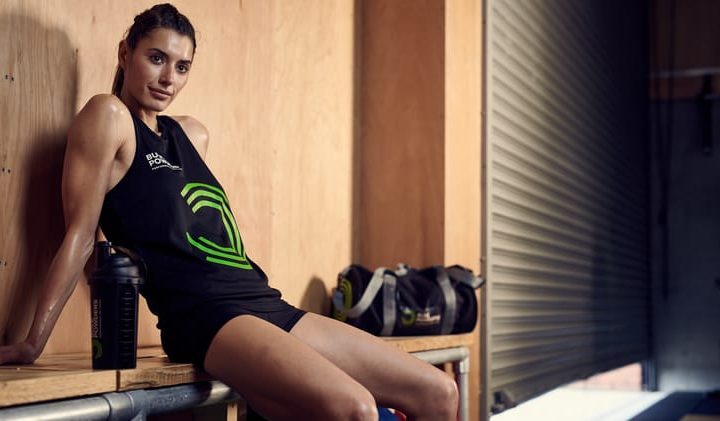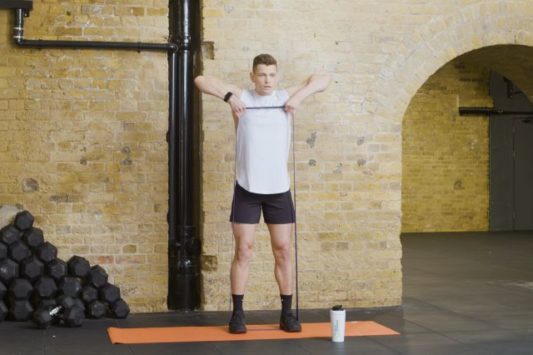Every tool man needs a toolkit, the same is true for every gym goer needing a gym bag. A lot of people take supplements to supplement their diet but don’t use supplementary equipment to supplement their training!
In this article I’m going to lay out all the gym bag essentials you will ever need and explain why each will take your training to the next level.
I don’t suggest having all of these, if you go to the gym and only perform cardio then you don’t need to pay attention to weight lifting accessories so focus on what’s most relevant to your training.
1.) TENNIS BALL AND FOAM ROLLER
Whether training for cardio or weightlifting purposes your starting point is warming up and ensuring muscles are warm and loose before exercise. This is to prevent injury, cramps and to overall improve performance.
An extension of this is deep tissue massage and stretching, exercise and everyday activity take a toll on your muscles and even lying around doing nothing with lead to tense and knotted muscles over time. This means during exercise you will be more susceptible to cramps and injury as you won’t be able to go through a fluid range of motion during exercise.
Starting and ending your workouts with some deep tissue massage will help prevent and alleviate any scar tissue build up or muscle tightness which often leads to pain and discomfort when training. Use a foam roller to work larger muscles groups like legs and back and use a tennis ball to work the smaller and more difficult to reach areas such as your neck.
There are thousands of videos for self-deep tissue massage though the basic idea is to find a spot that feels painful or knotted, apply pressure and slowly roll on it. The relief you feel afterwards will make a drastic difference to your workout.
2.) LIFTING BELT
A lifting belt is usually a thick leather or neoprene belt that goes around your midsection for support when performing heavy compound exercises such as squats and deadlifts. When performing these lifts the muscles of your midsection will act as natural stabilisers to support your spine and help you stay upright.
A lifting belt places tension on your midsection and allows for the buildup of intra-abdominal pressure, crucial when performing a heavy compound lift like a squat. You do this by basically breathing into the belt (whilst it’s tight), you’ll feel it noticeably around your midsection and will automatically breath into it and tighten your whole midsection as a result. It’s this tightening of the abdominal muscles that will allow you to generate the necessary power to perform the lift. Having strong legs doesn’t necessarily translate to a strong squat!
It’s always the preferred method to perform this without external aid however having a heavy weight on your back makes it difficult to then concentrate on contracting your midsection, having a belt to breathe into takes away the mental aspect and means you’ll do this naturally so that you can focus on completing the exercise.
3.) LIFTING STRAPS
When training large muscle groups (primarily the back) it’s often the case that weaker muscles will give out first and it’s usually peoples grip strength that will let them down.
Lifting straps are a way of upping the weight (usually by a significant amount) or extending the number or reps you can perform in a set. You simply wrap the straps around the bar a few times, close your hands and that weight is then secure with minimal strain. It’s ideal for performing heavy deadlifts or even pull-ups depending on how much you weigh.
Building up grip strength should always be a priority however being able to lift more weight and for longer is something that should be utilised from time to time.
4.) RESISTANCE BAND
These are useful for two reasons and can be implemented in different training routines depending on what your goal is.
The first use is to warm up muscle groups (particularly smaller ones such as the shoulders) and to also offer resistance for the muscle without the added tension on joints and ligaments. This is especially true when weightlifting, muscles can adapt but you want them to be warmed up sufficiently without placing added tension on your joints, a resistance band allows you to use a range of movements for each muscle group and the resistance can be varied depending on your level of strength. A straight arm banded pull apart for example will warm up your shoulders and put blood into that area without putting tension on your joints, the shoulder joint being quite susceptible to injury as it is
The second use of resistance bands is to help progress your training by offering another form of workout load. A bands tension will increase the more it’s stretched meaning the workload will increase. Adding bands to a chest press for example will mean the exercise is easy at the bottom with hardly any tension on the band but then significantly greater at the top of the movement. It’s and excellent way to make the muscle work under different stimulus but also for training any weak points of a lift.
5.) LIFTING WRAPS
Lifting wraps work similar to a lifting belt in that they place tension and pressure on the joint during heavy lifts to act as support. When weightlifting it’s inevitable that you are going to work up to heavy weights in certain lifts at some point during your time in the gym, therefore it’s important that you look to minimise the risk of injury from this.
Your joints are not as well adapted or primed for lifting weights when compared to muscles, this is the case for lifting weights in general not just heavy loads. This is where wraps come into use, you can get wrist, elbow and knee wraps as these are the joints with the most weight/tension placed on them. They work to place tension around the joints and keep them in a stable and secure position which can be difficult to do when your main focus is on moving a heavy weight from point A to B.
As with other accessories these are not a necessity but are definitely something to consider for those looking to train with weights that are on the heavier side.
6.) SHAKER
This is by far the simplest but possibly most beneficial addition to your gym bag for anyone and everyone. Getting in your daily nutrition requirements can be a surprisingly difficult thing to achieve which is why basic supplementation can really go a long way to improving your results.
During a busy day having the option to consume a quick shake can mean all the difference between getting enough protein for the day and building muscle or not hitting your requirements and seeing your progress stall. This is truer around a workout when you are most receptive and efficient with the nutrients that you digest.
Not to be too dramatic but having a protein shake after a workout can be massively beneficial to your training and even more so when combined with a fast-acting carbohydrate source like dextrose. Your body will best utilise these nutrients around training so adding a shake around your training is a simple addition that takes minimal effort for a maximum return.

